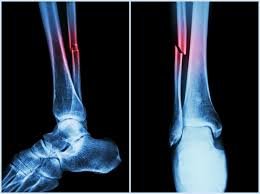Understanding Whiplash Injuries
Whiplash injuries are a common result of car accidents, sports injuries, and other traumatic events. They occur when the head is suddenly jerked forward and then backward, causing the neck to whip in a rapid and forceful motion. While whiplash injuries are often associated with car accidents, they can also occur in other situations where there is a sudden impact or jolt to the head and neck.
Causes of Whiplas Injuries
The most common cause of whiplash injuries is car accidents, particularly rear-end collisions. When a car is hit from behind, the impact can cause the head to jerk forward and then backward, putting a strain on the neck. However, whiplash inuries can also occur in other situations, such as sports accidents, falls, and physical assaults.
It’s important to note that whiplash njuries can happen even at low speeds. In fact, research has shown that whiplash injures can occur at speeds as low as 5 mph. This is because the force of the impact, rather than the speed, is what causes the injury. Therefore, it’s crucial to seek medical attention after any accident or incident that involves a sudden jolt or impact to the head and neck.
Symptoms of Whiplash Inuries
The symptoms of whiplah injuries can vary depending on the severity of the injury. Some common symptoms include:
- Neck pain and stiffness
- Headaches
- Shoulder pain
- Back pain
- Dizziness
- Numbness or tingling in the arms
- Difficulty concentrating
- Memory problems
In some cases, the symptoms of whiplash may not appear immediately after the injury. It can take several hours or even days for symptoms to develop. This is why it’s important to seek medical attention as soon as possible after any accident or incident that may have caused a whiplash injury.
Treatment for Whipsh Injuries
The treatment for whiplash injuies depends on the severity of the injury and the individual’s specific symptoms. In most cases, whiplas injuries can be effectively treated with conservative measures, such as:
- Rest and immobilization of the neck
- Applying ice or heat to the affected area
- Pain medication to reduce inflammation and relieve pain
- Physical therapy exercises to improve range of motion and strengthen the neck muscles
In more severe cases, additional treatments may be necessary. These can include:
- Prescription medication for pain management
- Cervical collar or brace to immobilize the neck
- Injections of corticosteroids to reduce inflammation
- Referral to a specialist, such as a chiropractor or physical therapist
It’s important to follow the recommended treatment plan and attend all follow-up appointments to ensure a full recovery from whiplash injuries. Ignoring or neglecting treatment can lead to long-term complications and chronic pain.
Preventing Whipash Injuries
While it may not be possible to completely prevent whiplash injuries, there are steps you can take to reduce your risk. Some preventive measures include:
- Wearing seat belts while driving or riding in a car
- Adjusting the headrest in your car to the proper height and position
- Using proper safety equipment while participating in sports or recreational activities
- Practicing good posture and ergonomics
- Being aware of your surroundings and avoiding situations that may put you at risk for a sudden impact or jolt to the head and neck
By taking these precautions, you can reduce your risk of experiencing a whiplash injury. However, accidents can still happen, so it’s important to be prepared and seek medical attention if you suspect you may have sustained a whiplash injury.
In Conclusion
Whiplash injuries are a common and often painful result of car accidents, sports injuries, and other traumatic events. They can cause a range of symptoms, from neck pain and stiffness to headaches and difficulty concentrating. It’s important to seek medical attention if you suspect you may have sustained a whiplash injury, as early treatment can lead to a faster and more complete recovery.
Remember, prevention is key. By taking steps to reduce your risk of whiplash injuries, such as wearing seat belts and adjusting your car’s headrest, you can protect yourself from the potential pain and long-term complications associated with these types of injuries.
